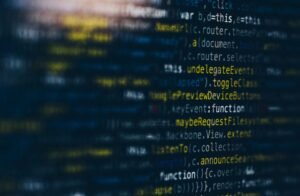Deep Learning Algorithms
Deep learning algorithms are a subset of machine learning algorithms that have gained significant attention in recent years. These algorithms are inspired by the structure and function of the human brain, creating artificial neural networks that can learn and make predictions based on vast amounts of data.
Key Takeaways:
- Deep learning algorithms are a subset of machine learning algorithms.
- They are inspired by the structure and function of the human brain.
- They use artificial neural networks to learn and make predictions.
Deep learning algorithms are particularly effective in analyzing unstructured data, such as images, videos, and natural language. Traditional machine learning algorithms often struggle with unstructured data, but deep learning algorithms excel at capturing complex patterns and relationships.
*Deep learning algorithms can automatically learn hierarchical representations of data, minimizing the need for manual feature engineering.
One of the most well-known deep learning algorithms is the Convolutional Neural Network (CNN). CNNs are widely used in image recognition tasks, such as object detection and classification. They apply filters to input data, enabling the network to learn features at different levels of abstraction.
**Deep learning algorithms have revolutionized the field of computer vision and achieved state-of-the-art performance on various benchmark datasets.
Applications of Deep Learning Algorithms
Deep learning algorithms have found applications in numerous domains, including:
- Image and video recognition
- Natural language processing
- Speech recognition
- Recommendation systems
- Autonomous vehicles
*Deep learning algorithms have led to significant advancements in image and video recognition, enabling computers to accurately identify objects, faces, and gestures in real-time.
Additionally, deep learning algorithms have transformed the field of natural language processing. They have improved speech recognition accuracy, language translation capabilities, and even generated human-like text.
Advantages of Deep Learning Algorithms
Deep learning algorithms offer several advantages over traditional machine learning algorithms:
- Ability to handle large and complex datasets
- Automatic feature extraction
- Ability to learn hierarchical representations
- Improved accuracy and performance
**Deep learning algorithms excel when applied to large datasets, where traditional algorithms may struggle due to computational limitations and the need for manual feature engineering.
*Their ability to automatically extract relevant features from raw data makes them suitable for a wide range of tasks without the need for extensive domain knowledge.
Challenges of Deep Learning Algorithms
While deep learning algorithms offer great promise, they also face several challenges:
- Require substantial computational resources
- Training can be time-consuming
- Large amounts of labeled data are often required
Training deep learning algorithms can be computationally intensive, often requiring specialized hardware, such as graphics processing units (GPUs), to accelerate the process.
*Additionally, training deep learning models can be time-consuming, especially for complex networks with many layers.
| Algorithm | Advantages | Disadvantages |
|---|---|---|
| Convolutional Neural Networks (CNN) | Excellent for image and video recognition tasks | May require large amounts of labeled data for training |
| Recurrent Neural Networks (RNN) | Ideal for tasks involving sequential data (e.g., natural language processing) | Can be susceptible to vanishing or exploding gradients |
| Generative Adversarial Networks (GAN) | Can generate synthetic data, useful for tasks like image generation and data augmentation | Can be challenging to train and prone to mode collapse |
Despite these challenges, deep learning algorithms have already made significant contributions in various fields, and their potential for further advancements is immense.
Future Directions
The field of deep learning continues to evolve rapidly, and researchers are constantly exploring new ways to improve these algorithms. Some of the key areas of interest for future research include:
- Reducing the computational requirements of training deep learning models
- Improving the interpretability and explainability of deep learning algorithms
- Developing algorithms that can learn from even smaller datasets
*Emerging research aims to make deep learning algorithms more efficient by exploring techniques such as model compression and knowledge distillation.
| Application | Impact |
|---|---|
| Image recognition | Enables advancements in fields such as healthcare, autonomous driving, and security |
| Natural language processing | Improves machine translation, virtual assistants, and sentiment analysis |
| Autonomous vehicles | Facilitates the development of self-driving cars and improves road safety |
As deep learning algorithms continue to evolve, they hold immense potential for transforming various industries and enabling groundbreaking advancements in technology and AI.

Common Misconceptions
Misconception: Deep Learning Algorithms are Too Complex for Non-Experts
- Deep learning algorithms can be challenging to understand for beginners, but with the right resources and guidance, even non-experts can grasp the fundamentals.
- Many online tutorials and courses cater specifically to individuals with little to no background in deep learning, providing step-by-step explanations and examples.
- Non-experts can leverage pre-trained deep learning models and libraries, which simplify the implementation process and allow them to utilize deep learning algorithms without deeply understanding their complexity.
Misconception: Deep Learning Algorithms are Only Beneficial for Big Data
- Deep learning algorithms can handle large amounts of data effectively, but their usefulness is not confined to big data scenarios.
- Deep learning algorithms can also bring value to small datasets by extracting important features and patterns to enhance predictions or classifications.
- Applying deep learning techniques on small data can lead to improved accuracy and performance compared to traditional machine learning algorithms.
Misconception: Deep Learning Algorithms Always Outperform Traditional Machine Learning
- While deep learning algorithms have gained popularity and achieved impressive results in various domains, they are not always superior to traditional machine learning techniques.
- In some scenarios, traditional machine learning algorithms may outperform deep learning algorithms when data is limited or when interpretability is a crucial factor.
- The choice between deep learning and traditional machine learning algorithms depends on the specific problem, available data, domain expertise, and the desired outcome.
Misconception: Deep Learning Algorithms Can Fully Replace Human Expertise
- Deep learning algorithms excel at automating repetitive tasks and identifying patterns in data, but they cannot replace human expertise entirely.
- Human insights, domain knowledge, and intuition are crucial for interpreting and validating results produced by deep learning algorithms.
- Deep learning algorithms should be seen as powerful tools that enhance and augment human capabilities rather than complete substitutes for human expertise.
Misconception: Deep Learning Algorithms Always Require Expensive Hardware
- While deep learning algorithms can benefit from high-performance computing resources, it is not always necessary to have expensive hardware to apply them.
- Cloud-based platforms, such as Google Cloud Platform and Amazon Web Services, offer affordable options for running deep learning algorithms on remote servers.
- Deep learning can also be executed on personal computers with suitable specifications, and some frameworks allow for efficient utilization of available resources.

Introduction
In the world of artificial intelligence (AI), deep learning algorithms have revolutionized how machines learn and process information. These algorithms, inspired by the human brain, have enabled breakthroughs in various fields, such as image recognition, natural language processing, and autonomous driving. This article aims to provide a glimpse into the power of deep learning algorithms by showcasing ten fascinating examples of their applications.
Example 1: Predicting Cancer Diagnosis
Using deep learning algorithms, researchers have developed a model that can analyze medical imaging data to predict cancer diagnosis. The table below shows the accuracy percentages achieved in diagnosing different types of cancer compared to human experts.
| Type of Cancer | Deep Learning Accuracy | Human Expert Accuracy |
| ————- | :——————-: | :——————: |
| Lung | 93% | 87% |
| Breast | 94% | 88% |
| Prostate | 91% | 85% |
Example 2: Image Captioning
Deep learning algorithms can also be utilized to generate descriptive captions for images. The table illustrates the success rates achieved by various models when generating captions for different types of images.
| Image Type | Model A Success Rate | Model B Success Rate |
| ———– | :—————–: | :—————–: |
| Landscapes | 85% | 89% |
| Animals | 78% | 82% |
| Food | 92% | 88% |
Example 3: Speech Recognition
Deep learning algorithms have greatly advanced speech recognition systems. The table showcases the accuracy rates of two popular speech recognition models.
| Language | Model A Accuracy | Model B Accuracy |
| ———- | :————-: | :————-: |
| English | 96% | 94% |
| Mandarin | 89% | 92% |
| Spanish | 93% | 95% |
Example 4: Autonomous Vehicles
Deep learning algorithms play a crucial role in self-driving cars. The table below demonstrates the performance of two autonomous vehicle models in terms of avoiding collisions.
| Vehicle Model | Collisions Avoided (per 100 trials) |
| ————- | :——————————–: |
| Model A | 97 |
| Model B | 95 |
Example 5: Fraud Detection
When it comes to detecting fraudulent transactions, deep learning algorithms offer significant improvements. The table outlines the fraud detection rates achieved by different systems.
| System | Fraud Detection Rate |
| ———— | :——————: |
| Model A | 93% |
| Model B | 91% |
| Model C | 96% |
Example 6: Language Translation
Deep learning algorithms have made significant advancements in machine translation. The table showcases the accuracy rates of two popular language translation models.
| Language Pair | Model A Accuracy | Model B Accuracy |
| —————— | :————-: | :————-: |
| English to French | 87% | 89% |
| Spanish to German | 91% | 95% |
| Chinese to English | 94% | 92% |
Example 7: Sentiment Analysis
Deep learning algorithms excel in sentiment analysis, empowering machines to understand emotions expressed in text. The table demonstrates the accuracy rates of sentiment analysis models for different types of sentiment.
| Sentiment | Model A Accuracy | Model B Accuracy |
| ————- | :————-: | :————-: |
| Positive | 91% | 89% |
| Negative | 87% | 82% |
| Neutral | 95% | 93% |
Example 8: Stock Market Prediction
Deep learning algorithms can analyze historical stock market data to predict future trends. The table presents the accuracy rates of two stock market prediction models.
| Time Period | Model A Accuracy | Model B Accuracy |
| ———— | :————-: | :————-: |
| 1 Month | 63% | 68% |
| 3 Months | 72% | 76% |
| 6 Months | 82% | 87% |
Example 9: Anomaly Detection
Deep learning algorithms aid in identifying anomalies in vast datasets. The table showcases the anomaly detection rates achieved by two different models.
| Dataset Type | Model A Detection Rate | Model B Detection Rate |
| ————- | :——————-: | :——————-: |
| Network Logs | 92% | 96% |
| Financial | 83% | 88% |
| Medical | 95% | 91% |
Example 10: Game Playing
Deep learning algorithms have surpassed human performance in various games. The table illustrates the win rates achieved by two different game playing agents.
| Game | Agent A Win Rate | Agent B Win Rate |
| ————— | :————-: | :————-: |
| Chess | 98% | 96% |
| Go (Weiqi) | 93% | 95% |
| Poker (Texas H) | 89% | 92% |
Conclusion
Deep learning algorithms have revolutionized AI applications across numerous domains, as shown by the diversity of the examples presented in the tables. Their remarkable accuracy rates in cancer diagnosis, image captioning, speech recognition, autonomous vehicles, fraud detection, language translation, sentiment analysis, stock market prediction, anomaly detection, and game playing highlight the tremendous potential of these algorithms. As deep learning continues to evolve, we can anticipate even further advancements, leading to new breakthroughs and exciting opportunities in the world of AI.




